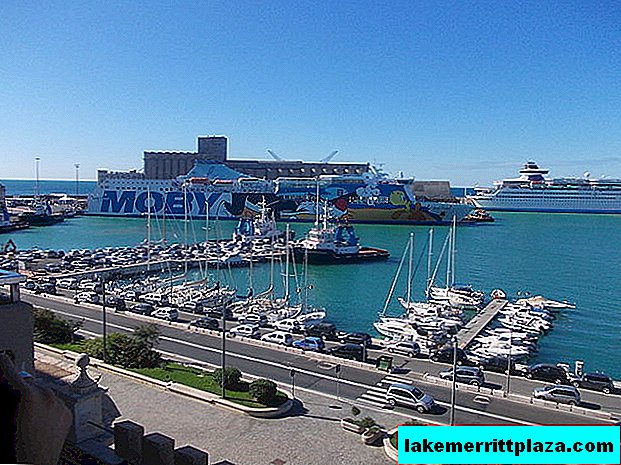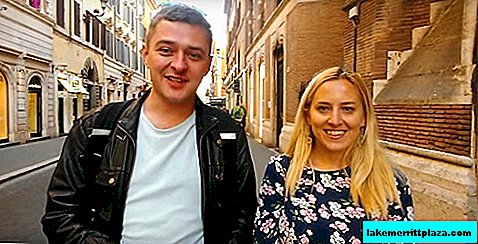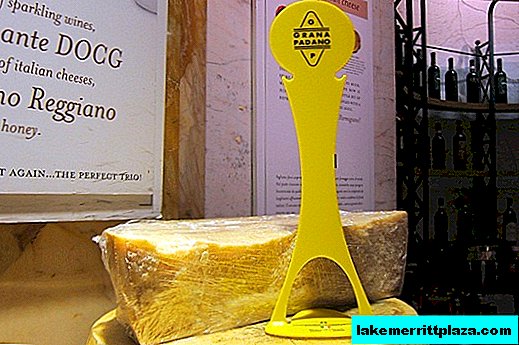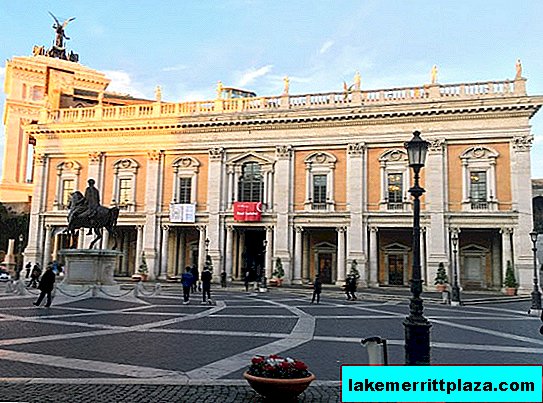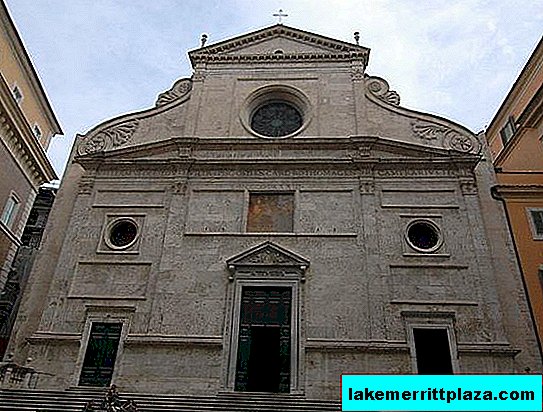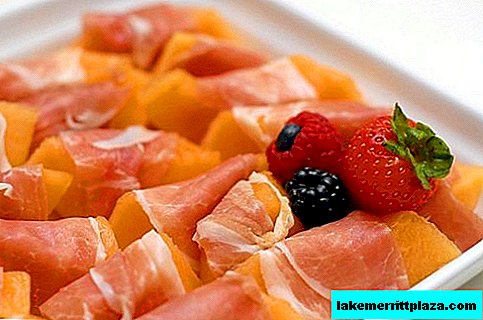The German Technical Museum is worth a visit for both adults and children. Real airplanes, sailing ships, navigation, cars with and without cuts, paper technology ... All the technical magic of the world can be touched and studied from the inside.

German Technical Museum (Deutsches Technikmuseum Berlin), photo by Marc Fray
The German Technical Museum (Deutsches Technikmuseum Berlin - DTMB) in Berlin owns one of the largest collections dedicated to technology and production in Germany. The museum area is 25 thousand m². It combines several museum and scientific institutions: the Museum of Technology, the Sugar Museum, the Spectrum Research Center, an observatory and a planetarium. There are permanent large expositions and thematic exhibitions.
The technical museum opened in 1983. Since 1996, it has a modern name: Deutsches Technikmuseum Berlin. About 600,000 people visit DTMB annually. The museum is located in the building of the former railway depot at Anhalter Bahnhof station.
The five-story glass DTMB building is noticeably from afar. The redevelopment of the former depot was carried out by two architects: H. Ptits and W. Volt. Above the museum entrance, on the roof, a Douglas C-47 Skytrain bomber is mounted - an airplane that was used to deliver food to Berlin in the post-war years.
Permanent exhibitions
Aerospace Exhibition (Luft- und Raumfahrt)

Aerospace Exhibition, photo René
An aviation exhibition greets visitors inside the museum. 6000 m² is dedicated to significant events that accompanied the development of German aviation and space. Four dozen large objects, memorabilia, documents and photographs illustrate the 200-year history of conquering the sky - from balloons of the XVIII century to modern air transportation. At the exhibition you can see Otto Lilienthal gliders, the development of "pioneers" of controlled flight, aviation from the times of World War I and II, and the first passenger aircraft. There are unique copies presented only in the Berlin Museum.
Water Transport (Schifffahrt)

Watercraft (Schifffahrt), photo by Nevernote
About 1,100 exhibits on the history of sea and river waterways are presented on three floors. The "ship" exhibition of the DTMB museum is considered one of the largest in the world. Vessels of various types, ranging from sailing ships and steamboats, are exhibited in the form of reduced and full-size models. Navigation aids are also exhibited here.
Rail Transport (Schienenverkehr)

Rail (Schienenverkehr), photo by Bobby Ryder
The most popular exposition is the railway. Berlin is considered the historical center of the German railway network. Here you can see locomotives and cars of the period 1843 - 1985. About 40 copies are exhibited in the original size. The history of railway transport is presented at 33 thematic "stations". A separate part of the exposition is devoted to the gloomy pages of World War II: the theme of the deportation of Jews from Germany and the role of rail transport in this dark chapter of military history.
Energy (Energietechnik)
The exhibits of the energy technology exhibition are distributed throughout the museum. The first steam engine, built in 1860, can be seen right at the main entrance. The exposition in the park is dedicated to wind energy.
Chemical and pharmaceutical industry (Chemisch-pharmazeutische Industrie)
At the exhibition of the chemical and pharmaceutical industry, you can watch and participate in technological processes. There is modern equipment and antique specimens of flasks, test tubes, instruments, and medicinal packaging. The exposition is called "Pills and Pipettes" (Pillen und Pipetten).
The history of cinema (Geschichte der Filmtechnik)
The cinema exposition does not represent the history of cinema from the first film of the Lumiere brothers, as is customary in other museums. The Berlin Museum talks about the early premises of the art of "living pictures", about medieval puppet theaters and "magic lanterns". The museum has a unique collection of movie equipment and rare films.
Phototechnology (Fototechnik)

Exhibition of photographic equipment, photo Anders Harbo
The exhibition of photographic equipment not only illustrates the development of photography technology, but also talks about the role of the art of photography in society and its use in various fields - from advertising to espionage. The title of the exhibition is “The Charm of the Moment - The Technical History of Photography” (Faszination des Augenblicks - Eine Technikgeschichte der Fotografie).
Historic Brewery (Historische Brauerei)
Here, the focus of visitors is the classic technology of brewing beer with technical equipment of the beginning of the last century. They don’t offer beer in the museum, but they tell in detail about the intricacies of the process.
Computer and automated technologies (Rechen- und Automationstechnik)
The computer exposition contains a unique exhibit from which the era of digital technology began - the first computer developed by Konrad Zuse in 1938. The museum features 12 cars created by Zuse and genuine documents on the development of the computer language Plankalkül.
Production Technology (Produktionstechniken)
This exposition has two sections, where examples of manual and industrial production methods of the XIX-XX centuries are given:
- Case manufacture (Kofferproduktion),
- Jewelry Manufacturing (Schmuckproduktion).
Jewelery manufacturing technologies from the beginning of the 20th century are demonstrated at the jewelry production exhibition. The history of the serial production of jewelry products and the types of machines that were used in it are shown.
Printing Technology (Schreib-und Drucktechnik)
At the printing exhibition, all the machines are in working condition. Visitors under the guidance of museum staff can print on a wooden press of the 17th century or on a cast-iron press of the 19th century. Printing techniques are shown here, starting with medieval stamping and prints.
Paper Technology (Papiertechnik)
The exhibition covers hand-made papermaking techniques, European and Asian.
Roads and city management (Straßen- und Kommunalverkehr)

Car Rumpler Tropfenwagen, photo René
The exhibition tells about the roads and public transport of the XIX-XX centuries: cars, bicycles, motorcycles, wagons, hearse, trams, trolley buses, buses and other equipment.
Engineering Communications (Nachrichtentechnik)

First TVs, photo by Bobby Ryder
The subject of the exhibition is the transmission of sound and images, namely telegraph, telephone, radio and television. Electrical communication methods have changed over the last hundred years. The history of recording and reproduction of sound and images can be traced from the first phonograph to the first video machines.
Fabric Technology (Textiltechnik)

Machines for embroidery, photo Johannes Brock
At the textile technology exhibition, you can see textiles of various types and methods of production. Looms, embroidery machines are exhibited here.
Zeiss - The Great Planetarium of Berlin (Zeiss-Großplanetarium Berlin)

Zeiss - Berlin's Great Planetarium (Zeiss-Großplanetarium Berlin), photo by Stephan Rebernik
Many visitors are gathered by the Zeiss planetarium. It hosts lectures accompanied by the display of a digital starry sky, and cultural events (for example, concerts of classical music under the stars).
Observatory Archenhold (Archenhold-Sternwarte)

Archenhold-Sternwarte Observatory, photo by Karl Schultz
The Archenhold Observatory, built as part of the 1986 industrial exhibition, presents several astronomical sections. The Big Telescope, the eighth largest in the world, was created for this exhibition. It functions today.
The oldest museum exhibition, created in 1904, dedicated to sugar (Zucker-Museum) was closed in November 2012. Now you can learn about sugar - from the technology of its production, to the role of the product in the economy, art and folklore, at the Kreuzberg Technical Museum (Deutsche Technikmuseum in Kreuzberg) since the end of 2014.

German Technical Museum in the evening, photo by Michael
Working hours
VT-Fri 09:00 - 17:30;
Sat, Sun and holidays 10:00 - 18:00;
Mon day off.
Tickets
Full ticket - € 8.00;
preferential - € 3,50.
How to get there
Take metro U1, U2 to Gleisdreieck station.
How do I save on hotels?
Everything is very simple - look not only at the booking. I prefer the search engine RoomGuru. He is looking for discounts at the same time on Booking and on 70 other booking sites.


